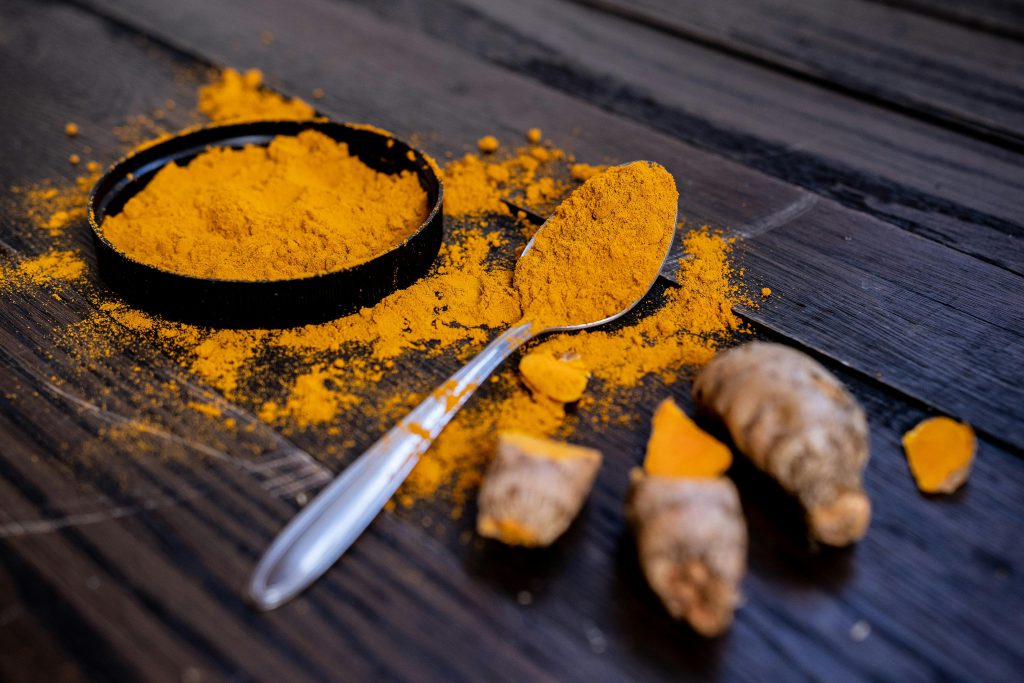
Turmeric (Curcuma) stands as a staple spice in Asian and African cuisine, renowned for its myriad health benefits. Derived from the perennial plant belonging to the ginger family, Zingiberaceae, turmeric has been utilized for millennia in India for its healing properties, including wound healing, stomach issues, and burns. Studies have revealed its potent anti-inflammatory, antioxidant, anti-tumor, antimicrobial, and immunomodulatory properties.
Here are five studies demonstrating the therapeutic potential of turmeric in endometriosis:
- Curcumin Inhibits Endometrial Cell Development by Reducing Estradiol Production.A study conducted in China examined both normal endometrial cells and those contributing to endometriosis. It was observed that the expression of estradiol, along with the development of endometriotic cells, was higher compared to normal cells. Treatment with varying concentrations of turmeric led to a reduction in endometriotic cell count and estradiol production. Turmeric, being a relatively weak phytoestrogen, counteracts the effects of estradiol, resulting in the death of endometriotic cells and the suppression of estradiol proliferation.
- Curcumin’s Effects on Matrix Metalloproteinase Enzymes. Another study from India investigated turmeric’s impact on matrix metalloproteinase (MMP) enzymes in mice. Endometriosis is characterized by abnormal growth of endometrial tissue, with MMP enzymes playing a crucial role in cell development and proliferation. Administration of turmeric before and after the development of endometriotic tissues reduced MMP secretion, leading to a decrease in tumor necrosis factor-alpha, a defining factor in inflammation. Additionally, turmeric controls and prevents oxidative stress.
- Curcumin’s Inhibitory Effect on Angiogenesis in Ectopic Endometrium. Angiogenesis refers to the development of blood vessels from pre-existing ones. One of the causes of endometriosis is the supply of blood from the bloodstream. Angiogenesis plays a crucial role in this condition, facilitating adequate blood supply for the spread of endometriosis. In a study from China, mice were divided into two groups and administered different doses of turmeric for four weeks. Turmeric treatment initially reduced the expression of endothelial growth factor and the density of microvessels specific to angiogenesis.
- Turmeric Inhibits Endometrial Cancer Despite the Uncertainty of Endometriosis Leading to Cancer. Another study demonstrates the effect of turmeric, along with letrozole (used for treating estrogen-sensitive tumors), on endometrial cancer in mice. Various doses of letrozole and turmeric were administered individually, resulting in tumor reduction due to the combination of the two substances. Additionally, turmeric potentiated the effect of letrozole.
- Anti-Inflammatory Effects of Turmeric Compared to Various Medications. Chronic pelvic pain, especially in the pelvic cavity, is one of the devastating effects of endometriosis. Nonsteroidal anti-inflammatory drugs (NSAIDs) are commonly used to alleviate pain but may lead to gastrointestinal, cardiovascular, and cerebral issues over time. Turmeric exhibits similar anti-inflammatory properties to NSAIDs but without adverse effects. Studies have shown that turmeric can be administered in combination with other anti-inflammatory drugs.
No adverse effects have been reported from the use of turmeric for dietary purposes. However, when using turmeric pills, it’s advisable to do so under the prescription of a doctor or nutritionist, in the appropriate dosage, to prevent potential overdoses or allergies.
Turmeric should be avoided during breastfeeding, pregnancy, or when taking blood-thinning medications, or in diabetes. Additionally, turmeric should be used with caution in cases of gallbladder disorders, biliary obstruction, or gastrointestinal issues.
Turmeric serves as an invaluable aid in combating endometriosis. However, like any other substance, turmeric should be administered personalized to each individual’s needs, so don’t hesitate to seek the advice of a specialist.

Below are the links to the studies referenced in this article:
Curcumin inhibits endometriosis endometrial cells by reducing estradiol production
Curcumin arrests endometriosis by downregulation of matrix metalloproteinase
Endometrial cancer: MedlinePlus Medical Encyclopedia
Comparative evaluation of the pain-relieving properties of a lecithinized formulation of curcumin
Image sources: saimaamiller.com

Turmeric (Curcuma) este o specie de condiment care este folosit ca ingredient de baza in bucataria asiatica si africana, fiind cunoscut pentru beneficiile sale pentru sanatate. Provenind de la o planta perena din familia ghimbirului, Zingiberaceae, turmericul a fost folosit de mii de ani in India pentru proprietatile sale vindecatoare, incluzand vindecarea ranilor, a problemelor digestive si arsurilor. Studiile au demonstrat ca turmericul are proprietati anti-inflamatorii, antioxidante, anti-tumorale, antimicrobiene si imunomodulatoare puternice.
Acest condiment poate avea un impact pozitiv si in cazul endometriozei, asa cum au demonstrat mai multe studii, printre care si cele prezentate in acest articol. Se pare ca turmericul poate bloca dezvoltarea celulelor de endometrioza prin reducerea productiei de estradiol si a enzimelor MMP, care sunt implicate in procesul de multiplicare celulara. De asemenea, turmericul poate inhiba formarea de noi vase de sange care sa hraneasca tesutul endometrial dezvoltat in afara uterului.